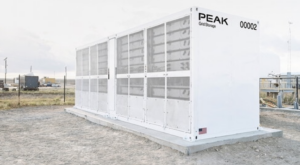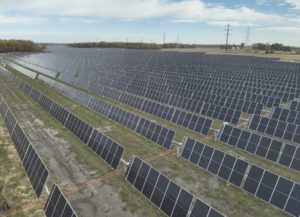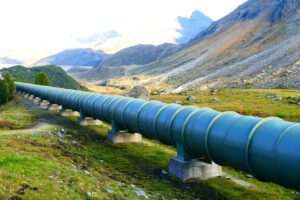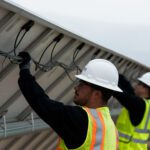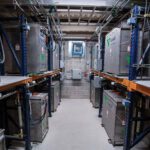Deployment operations management (DOM) systems were born of necessity to help telecom, renewable energy, electric vehicle (EV) charging, and other critical-infrastructure developers tackle the simultaneous design, build, and rollout of huge numbers of often-dispersed assets.
In renewable energy, these systems have become fundamental tools of digital transformation. They capture and centralize data available across a project portfolio, whether those projects are in the early planning phases or delivering electrons, and across site acquisition, interconnection, planning, permitting, design, financing, engineering, procurement, construction, contractor management, and operations and maintenance (O&M). Staff and leaders can then use that captured, centralized data to make better strategic and tactical decisions, communicate better, work faster, and make fewer mistakes. That brings efficiency gains and cost reductions.
|
1. The more information asset managers have about their systems, the better the chance that operations and maintenance work will be optimized. Workers in the control center will be able to access information and be able to streamline and better organize their check lists. Courtesy: Sitetracker |
DOM’s cloud-based platforms integrate all sorts of project data—maps, images, designs, schematics, project trackers, financials, field-team assignments and notes, and more—to help renewable energy and EV charging companies plan and manage their growing portfolios of job sites, assets, and crews in real-time (Figure 1). These systems are best known for combining the strengths of project-, asset-, and work-management software, sharpening the planning and development phase, speeding construction and implementation timelines, and streamlining vendor and labor management.
O&M a Logical Emerging Focus of Deployment Operations Management
While DOM leads with “deployment,” renewable energy and EV charging companies are now paying far more attention to efficiently and effectively operating and maintaining what they’ve already built. The buildout frenzy driven by low-interest-rate, land-grab environments is over. It’s time to profit from what’s been deployed.
Optimizing O&M will be a big part of that. Renewable energy and EV charging firms have built a ton of infrastructure, a lot of it widely dispersed. Service level agreements (SLAs) and government rules come with stringent uptime requirements, and O&M now begs for rationalization as desperately as the deployment side did a few years back. Energy and EV charging businesses are already using DOM for O&M. And why not? Their DOM systems have tracked site-specific data as well as every element of every system from the moment each was procured. These systems also track the numbers, skills, locations, and job-performance histories of in-house and contract O&M resources.
So, the table has been set for DOM in O&M. What exactly can these systems bring to it?
Precise Asset Status and History
A single solar installation can involve more than a thousand individual assets, each catalogued and, as time passes, its maintenance and repair history chronicled. Field techs want to know about them. Has a particular asset broken or failed in the past? Have similar assets failed elsewhere? Are the parts for fixes in local inventory, or in Taiwan?
Generative artificial intelligence (GenAI) is playing a role here, a situation that reflects DOM developers’ increasing investments in O&M-related features. GenAI can summarize asset history, maintenance logs, spare parts inventory, technical manual instructions, and other information in accessible ways. That helps field techs avoid having to tap and scroll through many screens of information across multiple sources—assuming they bother at all. And not bothering can mean reinventing the wheel, and that costs money.
Smarter Scheduling
O&M teams are drowning in work orders. That’s no surprise when more than 170,000 utility-scale and commercial solar installations; 75,000 wind turbines; and 77,000 EV charging stations are in place in the U.S. alone. And those numbers grow with each day.
Absent a strategic approach to managing O&M work, recency bias becomes a dominant service philosophy. Rigid scheduling based on limited criteria is also a shaky approach. A DOM system can help O&M managers prioritize and schedule more wisely. If there’s high-priority corrective-maintenance repair needed at a remote EV charging station, how about taking care of lower-priority preventive-maintenance work while you’re there and saving a truck roll? DOM systems enable that sort of dot-connecting, and it translates into more efficient O&M.
The more information dispatchers have at their disposal, the better the chance of O&M optimization. Among that information is technician skills, availability, location, and schedule on one hand, and jobsite locations and the nature of the O&M tasks and priorities on the other.
Figuring out rational schedules based on an array of inputs is a strength of machine learning, and that’s also the case in DOM-powered O&M. But GenAI plays a key role here: scraping from and assessing digitized SLAs to make sure those SLAs influence O&M decisions.
Such input can be decisive. For example, various factors may point to the immediate servicing of solar installation A. But if installation B also has an issue and B’s SLA stipulates a more pressing turnaround time with nastier consequences, that might bump up B’s priority. Without GenAI-accessible SLA data, a dispatcher might make the wrong call, which could be costly.
Improved O&M Safety and Security
The integration of jobsite safety and security functions into DOM systems is paying dividends in O&M. GenAI can take data from diverse sources—job-scheduling information, weather forecasts, site maps, incident reports, and other relevant inputs—and distill it into safety notices pushed to workers’ mobile devices as they arrive onsite. It might tell them to keep an eye out for rattlesnakes, that there’s afternoon lightning risk, or that steep grades have caused past injuries, for example. Without AI, accessing all that information might involve field technicians (Figure 2) tapping through the screens of different applications for weather, work orders, forms, and also safety, taking time better spent on actual O&M work.
|
2. Field workers, such as these working on a communications tower, benefit from having more information available about the work needed on an asset. They can make repairs and also look for opportunities to do preventative maintenance. Courtesy: Sitetracker |
GenAI can make safety information immediately accessible, clear, and tailored to location. Such a system can also build in intelligence that raises flags if a worker misses a check-in, doesn’t show up at a site, or is solo when he or she shouldn’t be. Such a system can pay off by keeping scarce field resources healthy and on the job, and it demonstrates to workers a genuine concern for their well-being. On the jobsite security front, DOM systems can integrate remote locks with access codes that the system provides only if a worker is certified to do work at the site on a particular day or days.
Empowered O&M Field Teams
This is about giving the staff contractors doing the O&M work greater agency. Time was, dispatchers handed out paper schedules listing fixed time blocks during which they should be doing a particular activity. Broader priorities still take precedence, but the wealth of information now available to workers in the field provides a basis for commonsense adjustments on the fly—particularly when opportunities to build synergies present themselves.
One example might be a worker stopping to check in on a jobsite that happens to be on the way home from the one they had been formally assigned to work. Another might be a technician recognizing that a corrective fix on one hardware element is cause for preventative fixes on similar onsite equipment. Centralized DOM systems enable the immediate approval of such work and the dynamic reordering of subsequent tasks. That’s good for the renewable energy developer or EV charging company, and it’s also good for employee retention.
AI Computer Vision, Object Detection Will Boost Quality Assurance
Computer vision and object detection is an emerging area of renewable energy O&M in particular. With assets, it can confirm whether the hardware instance a tech is poised to work on is in fact the one that needs to be worked on. It can also identify whether that asset has corroded or been damaged.
Some of the more exciting computer vision applications incorporate GenAI. That combination enables real-time repair instructions based on the problem immediately at hand, and image-based verification that a repair was done correctly. For example, if there are supposed to be four screws in a panel and the system detects only two, it lets the technician know. That prevents revisits, and connectivity with core systems means managers can see that the work was done right the first time.
Augmented reality (AR) will play a role here sooner rather than later, although there are hurdles such as connectivity at far-flung sites and the availability of affordable, field-grade AR hardware. Still, some wearable technology is already capable of verbally or visually walking a technician through repairs as they happen.
Easing Burdens on Control Center Staff
The jobs of renewable energy and EV charging control center staff are already challenging, and they get harder with each additional system added to the stable. Anything you can take off their plates is a win. AI agents can do that, specifically by flagging those that need human review, such as when estimated costs seem above market rate.
An AI agent can reach out via text, email, or voice based on the preference of an O&M service provider. The AI agent tracks approvals, contacts alternate O&M providers if primary contacts don’t come through, and follows up. It only alerts human staff if it dead-ends. In a busy control room, AI agents can offload tedious work and enable the management of more assets with fewer people.
For those reasons and others, DOM naturally extends to O&M. It’s already making a big difference in renewable energy and EV charging, and there’s much more to come. DOM developers and their customers are working together to add AI and other capabilities to more effectively and profitably manage and service what’s already been deployed—even as the energy transition’s ambitious (if not quite so frenzied) buildouts continue.
—Chaue Shen is a group product manager at Sitetracker.



